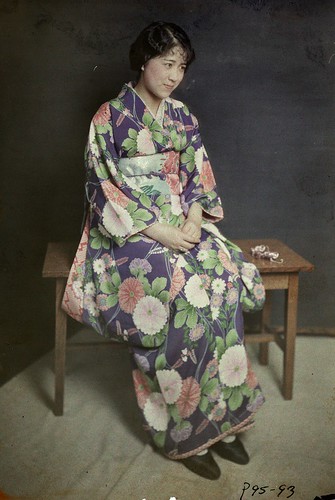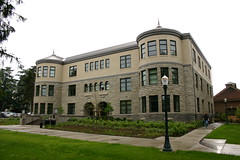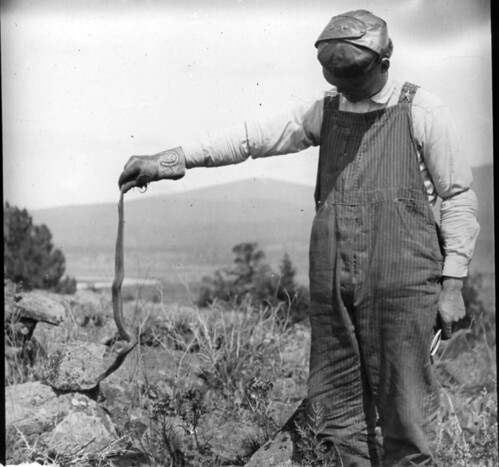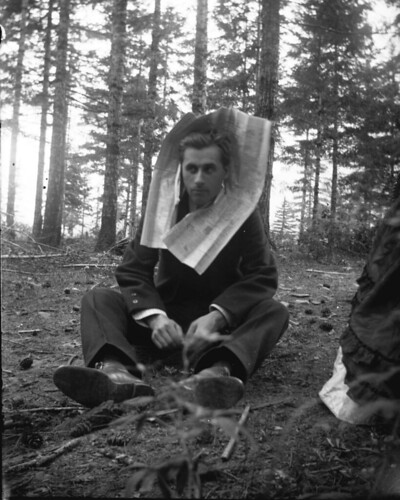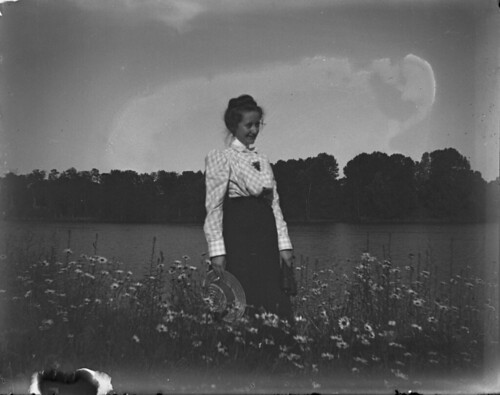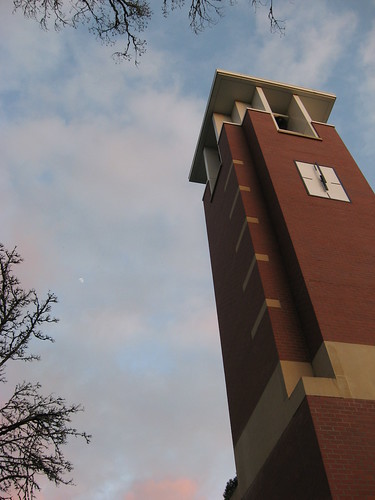Thanks “vintagepix”!
This beautiful & beguiling photo has graced the cover of our Oregon Multicultural Archives brochure, but when I tried to research Ruth Nomura for our International Womens Day set for Flickr Commons, I couldn’t find a thing … We knew the picture had been taken by an OSU photographer, John Garman, but basically we knew nothing about the context.
Who was she? Why did Garman take her photo? Was she a student? Where was the photo taken?
And so it remained one of those clichéd mysteries… Until “vintagepix” asked this question: “Any chance the name might be Nomura?” It was a great afternoon in the Archives, with staff scurrying around and clapping, pulling yearbooks off the shelves, retrieving student academic records, and really just smiling.
Because we were able to find her in the yearbooks, combined with the leads of “vintagepix,” we’ve pieced this little bit of her life together. She was born in 1907 in Portland, and was one of the first Japanese Americans born in Oregon. She graduated from Jefferson High School in 1924. According to the Japanese American Citizens League, Twin Cities chapter obituary for Nomura, “In 1926, as a winner of an essay contest for Nisei students, she traveled by steamship to Japan. She wrote that this trip ‘enriched my life and gave me a deep appreciation of Japan, its people, arts and civilization. It encouraged me to study the language, flower arrangement, holiday festivals, the tea ceremony, daily customs, Japanese cooking and serving, music, arts and crafts, particularly pottery, painting and calligraphy.’”
Then she came to OSC, as “the first Nisei woman from Portland to enroll in what is now Oregon State University.” She lived in Margaret Snell Hall all 4 years and graduated in 1930 with a BS in Home Economics.

And, I tell you she was quite active on campus! Look at this list, it will make most feel like under-achievers.
- Omicron Nu, secretary: National honorary fraternity in Home Economics, which was established at Michigan State college in 1912 and installed at OSC in 1919. “Its purpose is to further science in all extensive branches of home economics.”
- Phi Kappa Phi: National all-college scholastic honor society, which was established at OSC in June, 1924. “The purpose of this society is to emphasize scholarship among college students, and to stimulate mental achievement by the honor of selection to membership. This society stands for the unity and democracy of learning.”
- Kappa Delta Pi: “The purpose of Kappa Delta Pi is to foster higher professional and scholarship standards during the period of preparation for teaching, and to recognize outstanding service in the field of education.”
- Clara H. Waldo prize, honorable mention
- Cosmopolitan Club, vice-president: “The Cosmopolitan Club was formed to promote brotherhood and place humanity above all nations. Each year the club gives an International banquet. Meetings are every other week.”
And so … She left OSC in 1930 … But where did she go?
Again, turning to the obituary posted on the Japanese American Citizens League site we find an answer. She married Earl Tanbara at the Centenary Wilber Methodist Church in Portland, on September 16, 1935. When World War II, and relocation, began the Tanbara’s were living in Berkeley, CA. In 1942, they moved from Berkeley to a farm in Reedley, CA, in an attempt to avoid wartime internment. According to Earl Tanbara’s obituary, “[t]he bad news was that the boundaries for relocating individuals of Japanese ancestry were moved further inland and they were facing relocation. The good news was that the U.S. Army officer who visited the farm to inform them of the need to move to an assembly center was a former high school classmate of Ruth from Portland. The officer offered them an opportunity to move anywhere East if they had friends who would accept them. They contacted friends in Minneapolis and they were placed on a military train headed for the Twin Cities … Earl and Ruth assisted over a 100 evacuees to leave camp and find a place in the Twin Cities.” Ruth wrote, “Our main assignment was to build community acceptance. So each week, Earl and I were invited to different church groups, youth groups, schools, colleges and farming communities to give talks on Japanese Americans … As there were only 10 Japanese families living in St. Paul before the war, many Minnesotans were not acquainted with Americans citizens of Japanese extraction.”
At the end of the war, they decided to stay in Minnesota and in 1953, Ruth received her master’s degree in home economics from the University of Minnesota — as one of the first second generation women to earn a graduate degree. There is a letter in her OSC student file from 1953, written by her thesis advisor in Minnesota, with this wonderful quote: “I have never known anyone who was so versatile and could do well so many different things—from arranging flowers to organizing programs for the YWCA; from teaching foreign foods to writing publicity material. She is a charming, gracious person.”
What else do we know now? She was the Adult Education Director and International YWCA Program Director for the St. Paul YWCA from 1942 to 1972. She directed the participation of Japanese Americans in the first Festival of Nations in 1947, was one of the founding members in 1955 of the St. Paul-Nagasaki Sister City Committee (serving as president of the board from 1966-1972), and was a charter member of the Japan America Society when it was formed in 1972 and served on its board of directors. Ruth was a longtime member of Unity Unitarian Church in St. Paul, where she arranged flowers for Sunday morning services for more than 35 years, and the Japanese Garden at the YWCA on Kellogg Blvd. is named in her honor.
Ruth Tanbara passed away Jan. 4, 2008, at age 100. A small collection of her personal papers are available at the Minnesota Historical Society.

